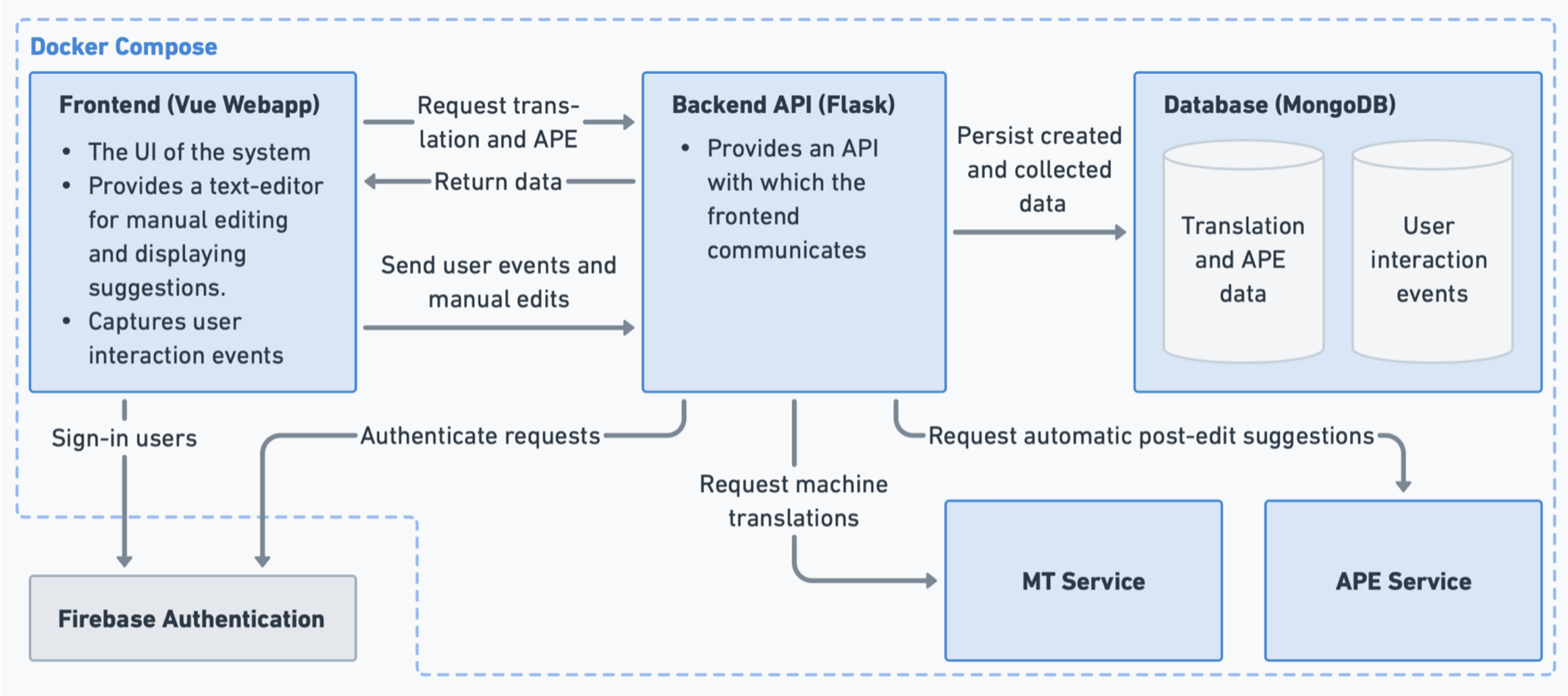Overview
- The ETH Media Technology Center is a collaborative effort between researchers and industry experts, focused on developing innovative technologies to shape the future of media. My team specialized in automatic post-editing (APE) models.
- I was tasked with designing a web interface for APE models, facilitating both their deployment for user testing and efficient data collection for training purposes.
- To accomplished this, I designed and developed a Vue.js-based web application, akin to Grammarly.com, featuring a rich-text editor with ML-driven suggestions. Additionally, I contributed to backend development and ensured the entire system was dockerized for seamless deployments. I prioritized flexibility, enabling easy model and component interchangeability.
- The developed system streamlined ML research by simplifying model deployment and user testing. We later open-sourced the system and published a paper (first-author) at ACL 2023 (#1 NLP conference).
Context
- 🗓️ Timeline: 06/2021 — 12/2021
- 👔 Role: Software Engineer, 35%
- ▶️ Live Demo: https://www.opentipe-demo.com
- 🎬 Trailer (2 min): https://www.youtube.com/watch?v=G3Hb8_hnKIk
- 📄 Paper: http://dx.doi.org/10.18653/v1/2023.acl-demo.19
- 📦 Repository: https://github.com/mediatechnologycenter/OpenTIPE
Technologies & Keywords
- TypeScript
- Vue.js
- Python
- Flask
- Docker
- PyTorch
- MongoDB
- Open-Source
- Human-in-the-loop.
Impressions
Trailer
The following trailer (2 min) explains the main features of the web interface:
Explanation
Currently, despite many advances in machine translation, professional translators must still review and edit the translations to ensure high-quality results. OpenTIPE simplifies the editing process.

The user starts the process by adding a source document (e.g., in German):

After clicking “Start translation”, the system will use a third-party service to translate the text. Additionally, it will generate editing suggestions using the automatic post-editing model.
The editing window has three columns: The left column shows the original text, the middle column shows the machine translation, and the right column shows the suggestions generated by the automatic post-editing model:

Using OpenTIPE comes with three main benefits:

I specifically want to highlight its flexible micro-service architecture that makes it possible for researchers to use the system with their custom models:

If you would like to learn more, please refer to the paper linked above or check out the live demo.




